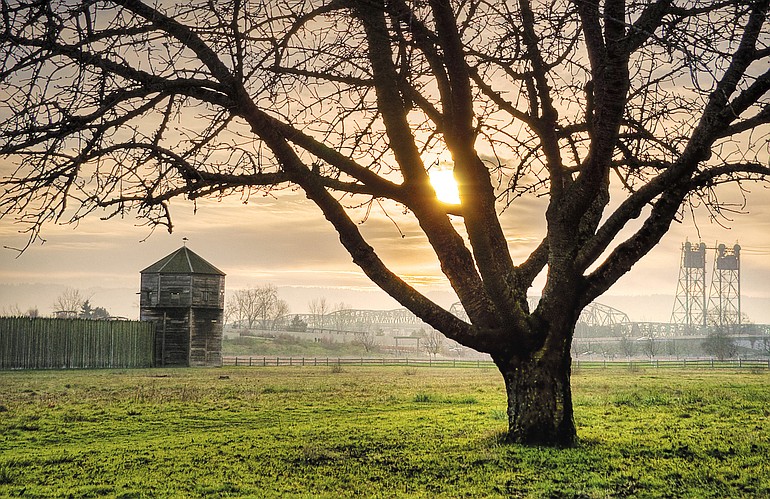Vancouver’s connection to Portland is both a blessing and a curse.
Some 60,000 of us cross the Columbia River each day to jobs in Oregon. Untold thousands more head over the river to catch a Blazers game, shop downtown, or attend a performance in the glitzy Arlene Schnitzer Concert Hall.
However, Vancouver’s proximity to the big city to the south also comes at a cost.
Over the past year, many Clark County residents have chafed over some of the nuts-and-bolts impacts of living close to a major American city: A transmission line intended to shore up a strained regionwide electrical grid will cut a swath through thousands of properties in Clark and Cowlitz counties. A new Interstate 5 bridge will extract tolls from many of those Clark County commuters. And the same bridge will extend Portland’s light rail transit system — derided by local critics as “loot rail” for its high cost and relatively low ridership — into Vancouver.
Vancouver, meanwhile, struggled in a couple of efforts to stand on its own.
The city flirted with the idea of capturing the Portland Beavers professional baseball franchise, left homeless by Portland’s decision to convert its baseball stadium into a soccer-only venue. But the Beavers-to-Vancouver idea fizzled in the face of the economic recession and lack of political will, meeting the same fate as previous initiatives to bring minor-league baseball to Vancouver.
Instead, the Beavers are bound for Escondido, a San Diego suburb with a smaller population than Vancouver.
Escondido, incidentally, already has another feature long coveted by arts aficionados in Vancouver: Its own performing arts center.
Vancouver, the fourth largest city in Washington, with a population of 165,000, is the only one of the state’s 10 largest cities lacking its own performing arts center or a percent-for-art program to fund public art. A long-sought effort to build a performing arts center in Vancouver continues to sputter.
“It’s a large enough town. This is the kind of town that would support a performing arts center,” said Joel Littauer, who moved here from Los Angeles eight years ago.
As a voluntary board member for the Southwest Washington Center for the Arts, Littauer has had a front-row seat in the city’s effort to distinguish itself apart from its big brother to the south. The existence of nearby cultural amenities in Portland has hindered the drive to establish a performing arts center in Vancouver, he said.
Yet tension lingers between the allure of Portland and Vancouver’s own civic aspirations.
“We want to be a city in our own right,” Littauer said. “On the other hand, we’re in close proximity to a big city, so there is an identity crisis.”
Clark County does have the biggest outdoor concert venue in the Portland-Vancouver metro area, with the Sleep Country Amphitheater at the county fairgrounds north of Vancouver. The site draws some of the country’s biggest entertainers to Southwest Washington, yet its history is tainted by the area’s love-hate relationship with Portland. The eight-year-old amphitheater, which can accommodate a crowd of 18,000 people, was fiercely opposed by neighbors worried about traffic and noise.
Many complained that many of the concertgoers would come from — gasp! — Portland.
“We have enough going for us that we don’t need to (have) an inferiority complex just because we happen to be near a major city,” Littauer said. “Glendale doesn’t feel this in relation to Los Angeles. Yonkers doesn’t feel that in relationship to New York City. But somehow, we do feel that in relation to Portland.”



